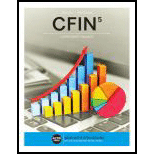
Concept explainers
CAPM:
Calculate the cost of capital as follows:
Net present value is the difference between the present values of
Calculate the net present value as follows:
Decision rule:
QQ is adding another division that requires initial outlay of $29,500 and generate cash inflows of $6,250. The given the market rate is 11%, risk free rate is 4% and beta is 0.8.
Want to see the full answer?
Check out a sample textbook solution
Chapter 10 Solutions
CFIN (with Online, 1 term (6 months) Printed Access Card) (New, Engaging Titles from 4LTR Press)
 Intermediate Financial Management (MindTap Course...FinanceISBN:9781337395083Author:Eugene F. Brigham, Phillip R. DavesPublisher:Cengage Learning
Intermediate Financial Management (MindTap Course...FinanceISBN:9781337395083Author:Eugene F. Brigham, Phillip R. DavesPublisher:Cengage Learning EBK CONTEMPORARY FINANCIAL MANAGEMENTFinanceISBN:9781337514835Author:MOYERPublisher:CENGAGE LEARNING - CONSIGNMENT
EBK CONTEMPORARY FINANCIAL MANAGEMENTFinanceISBN:9781337514835Author:MOYERPublisher:CENGAGE LEARNING - CONSIGNMENT

